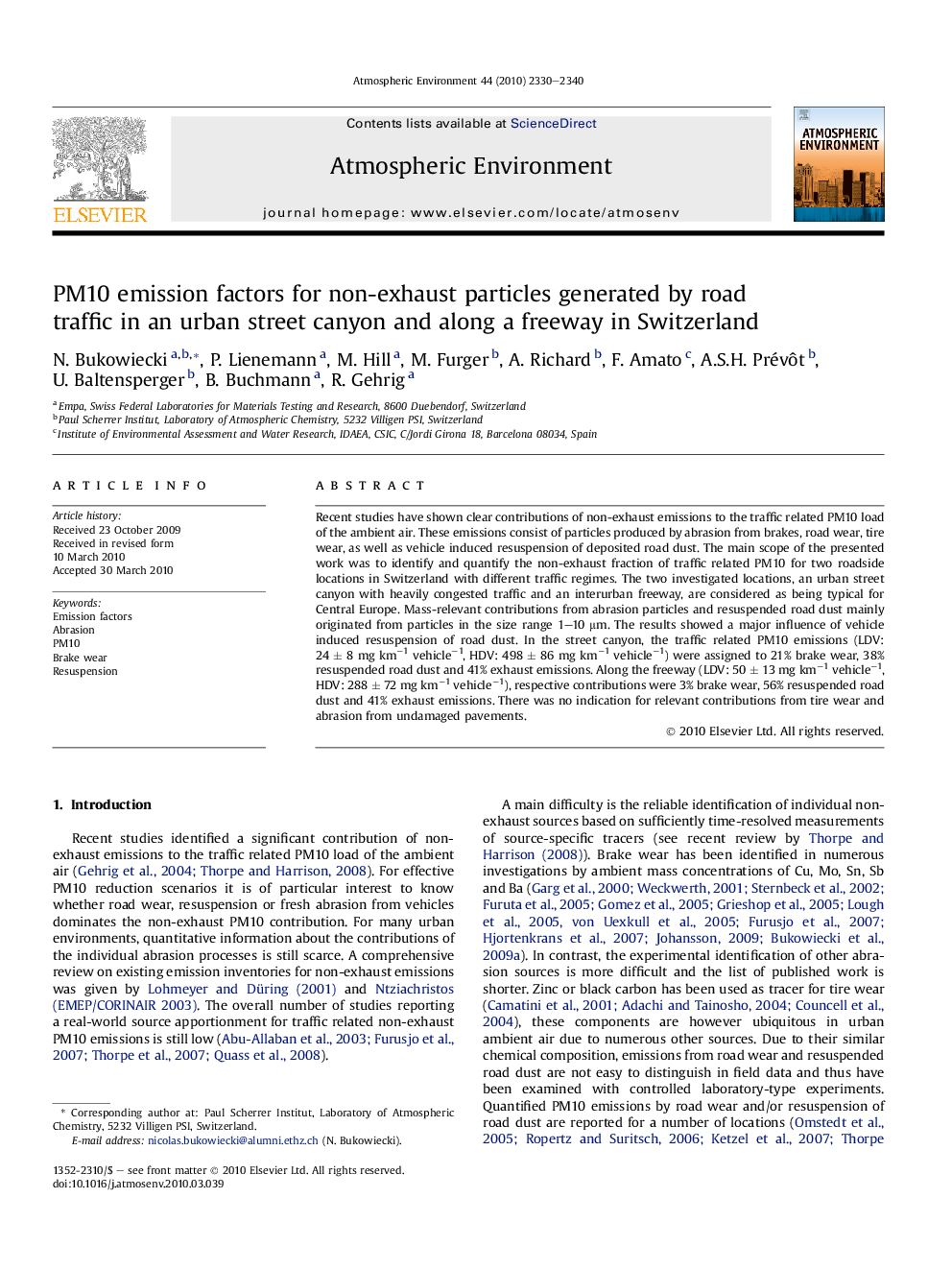| Article ID | Journal | Published Year | Pages | File Type |
|---|---|---|---|---|
| 4440694 | Atmospheric Environment | 2010 | 11 Pages |
Recent studies have shown clear contributions of non-exhaust emissions to the traffic related PM10 load of the ambient air. These emissions consist of particles produced by abrasion from brakes, road wear, tire wear, as well as vehicle induced resuspension of deposited road dust. The main scope of the presented work was to identify and quantify the non-exhaust fraction of traffic related PM10 for two roadside locations in Switzerland with different traffic regimes. The two investigated locations, an urban street canyon with heavily congested traffic and an interurban freeway, are considered as being typical for Central Europe. Mass-relevant contributions from abrasion particles and resuspended road dust mainly originated from particles in the size range 1–10 μm. The results showed a major influence of vehicle induced resuspension of road dust. In the street canyon, the traffic related PM10 emissions (LDV: 24 ± 8 mg km−1 vehicle−1, HDV: 498 ± 86 mg km−1 vehicle−1) were assigned to 21% brake wear, 38% resuspended road dust and 41% exhaust emissions. Along the freeway (LDV: 50 ± 13 mg km−1 vehicle−1, HDV: 288 ± 72 mg km−1 vehicle−1), respective contributions were 3% brake wear, 56% resuspended road dust and 41% exhaust emissions. There was no indication for relevant contributions from tire wear and abrasion from undamaged pavements.
